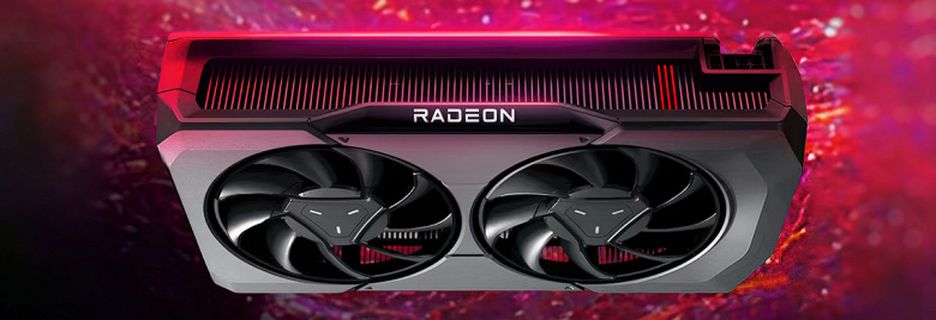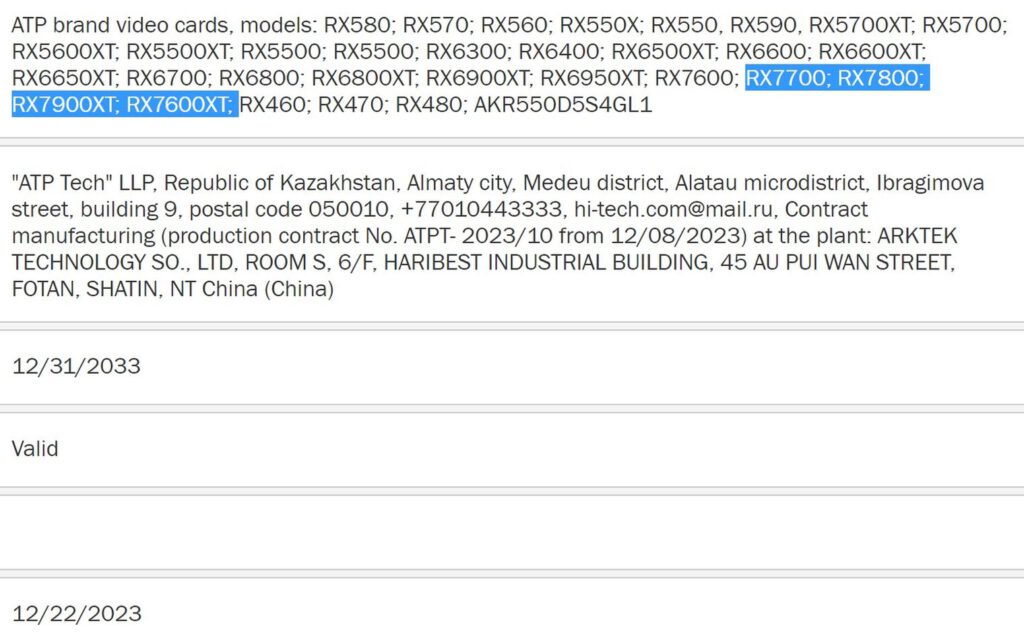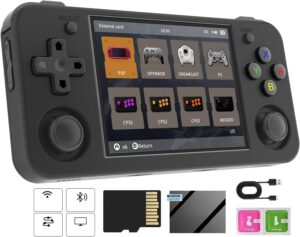Competitors for GeForce RTX 40 Super? Radeon RX 7600 XT, RX 7700, and RX 7800 Graphics Cards Spotted Online
Subheading: But so far, only in the EEC database, which guarantees nothing

AMD has already stated that it has completed the Radeon RX 7000 series of graphics cards and will not release entirely new models. However, the company noted that other versions of existing models might still be released. Such cards have been spotted in the EEC database.
These include the Radeon RX 7600 XT, RX 7700, and RX 7800 adapters. The Chinese company Arktek entered them into the database. It’s important to clarify that registering certain models in the EEC does not guarantee their release. Manufacturers may pre-register names they believe might appear on the market.
There are no technical specifications yet, but it’s worth remembering that the Radeon RX 7600 is already based on the Navi 33 GPU in its maximum configuration. Therefore, the RX 7600 XT model, if released, is likely to be just a faster version of the current card.

As for the RX 7700 and RX 7800, it’s worth recalling that the RX 7700 XT and RX 7800 XT both are based on the Navi 32 GPU. The difference in the number of stream processors is very small, so it’s unclear where the RX 7800 could fit in the lineup. However, there’s plenty of room for the RX 7700, as there is a significant difference between the RX 7600 and RX 7700 XT.
The Radeon RX 7600 XT, RX 7700, and RX 7800, if released, could potentially compete with NVIDIA’s GeForce RTX 40 Super series. The GeForce RTX 40 Super series is known for its advanced ray tracing capabilities and AI-driven features like DLSS (Deep Learning Super Sampling). AMD’s counterparts might offer competitive performance in these areas, considering their speculated GPU configurations.
AMD’s focus on diversifying its existing product lines with variations like the XT models suggests a strategy to cater to a wider range of market segments. This approach allows AMD to offer options for both high-end and mid-range users, thereby challenging NVIDIA’s dominance in various market segments.
In the context of gaming and professional graphics work, these new models from AMD, if released, could provide consumers with more choices, potentially leading to more competitive pricing and better performance per dollar. It will be interesting to see how AMD’s new offerings, particularly in the RX 7600 XT and RX 7700 models, compare in terms of performance, power efficiency, and overall value against NVIDIA’s offerings.
The B650 chipset has become AMD’s most popular chipset

